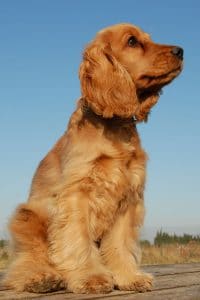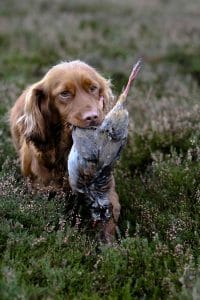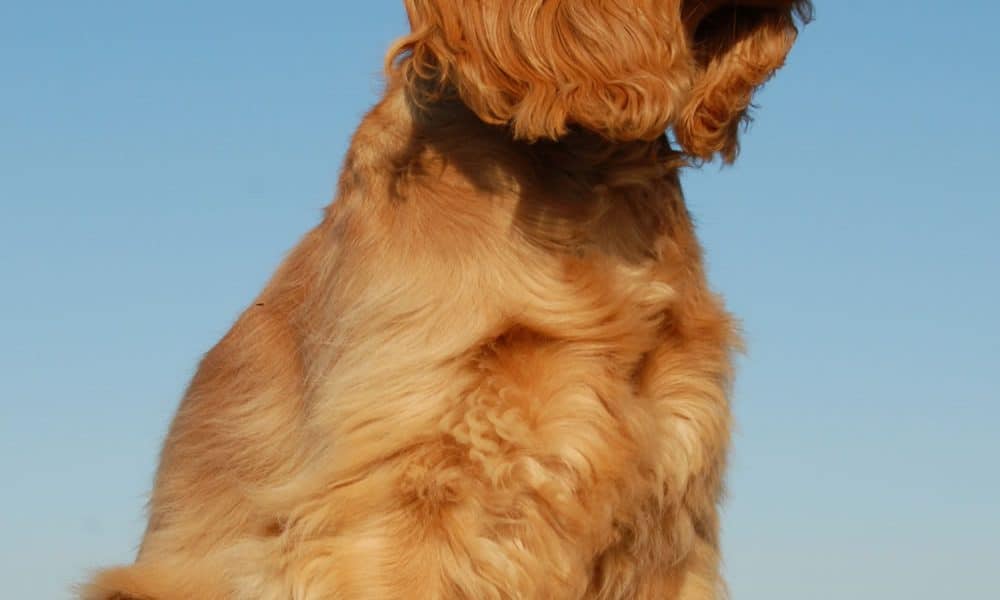 Cockers are one of the oldest known kinds of Land Spaniel. They are descendants of the original Spaniels from Spain and have become a family known to be much diversified in type, size, colour and hunting ability. Before the 17th century, all Spaniels belonged in one group. Eventually, they were grouped based on size and ability to hunt. English Cocker Spaniels were classified as Small Land Spaniels.
Cockers are one of the oldest known kinds of Land Spaniel. They are descendants of the original Spaniels from Spain and have become a family known to be much diversified in type, size, colour and hunting ability. Before the 17th century, all Spaniels belonged in one group. Eventually, they were grouped based on size and ability to hunt. English Cocker Spaniels were classified as Small Land Spaniels.
Cocker Spaniel pertains to two different breeds of Spaniel dogs—American Cocker Spaniel and English Cocker Spaniel. In their country or origin, they are simply referred to as Cocker Spaniels. In the United Kingdom, they were originally bred for the purpose of being a hunting dog. The “Cocker” in Cocker Spaniel is derived from the game bird they hunt—Eurasian Woodcock.
The first mention of Spaniels dates back to the 14th century. They were mentioned in various 14th century writings. Gaston III of Foix-Bearn’s work entitled Livre de Chasse is one of them. The first use of the term “Cocker Spaniel” or “Cocking” was in 19th century when Sydenhem Edwards classified field or land spaniels into two types—the Springer or Springing Spaniels and the Cocker or Cocking Spaniels. In 1892, the Kennel Club of England finally made the distinction between Springers and Cockers and recognised them as two different breeds.
English Cocker Spaniels are compact in size. The height ranges from 39 to 41 centimetres for males and 38 to 39 centimetres for females. The weight should be around 13 to 15 kilograms. English Cocker Spaniels are solidly built dog. They have soft, yet dignified, intelligent and alert expression. Their dark brown eyes are medium in size, slightly oval and are set wide apart. Ears are low, lie close to the head and are covered with long, straight or slightly curly hair. The skull is flat with sides in plane almost parallel to the muzzle. Their muzzles are well cushioned and jaws are strong,
English Cocker Spaniels have muscular, yet graceful neck at the same time. The neck is moderate in length and arches toward the head, blending smoothly into sloping shoulders. The body is compact, looking strong but not heavy. Tail is docked and is ideally carried horizontally. The tail is in constant motion and is carried higher when excited or in action. When it comes to forequarters, English Cocker Spaniels are moderately angulated and their forelegs are straight. Their feet are in proportion to the legs, when it comes to size and are round and catlike with thick pads. Hindquarters are also moderately angulated.
 English Cocker Spaniels have a fine and short coat on the head and medium length hair on the body, with flat or slightly wavy and silky texture. They come in various colours—solid and parti-colours. Solid colours are liver, black and various shades of red. Parti-colours are English Cockers with the colours mentioned in solid colours mixed with white. Tan markings are also common to appear with the solid colours mentioned above. However, English Cocker Spaniels with this colour are considered solid colour instead of parti-colour.
English Cocker Spaniels have a fine and short coat on the head and medium length hair on the body, with flat or slightly wavy and silky texture. They come in various colours—solid and parti-colours. Solid colours are liver, black and various shades of red. Parti-colours are English Cockers with the colours mentioned in solid colours mixed with white. Tan markings are also common to appear with the solid colours mentioned above. However, English Cocker Spaniels with this colour are considered solid colour instead of parti-colour.
There is also a second type of Cocker Spaniel in the UK, which are bred for their working abilities. Working and Show Cocker Spaniels are both registered as the same breed but they do have some distinct physical differences. For example, Working Cocker Spaniels tend to have shorter coats and shorter ears.
Although temperament varies and is dependent on the environment and family, generally, English Cocker Spaniels are known to have a merry and affectionate temperament. They are reserved when it comes to strangers. However, according to a study by Spanish researchers, compared to other breeds, they have the highest level of owner and stranger aggression.
Most English Cockers are eager to please, while there are some that can be stubborn and may require persuasion. Some are barkers and diggers and are difficult to housetrain. In addition, some are too affectionate and overly protective. They are not sluggish nor are they hyperactive. English Cocker Spaniels have retained, for the most part, their innate instinct and ability to hunt. They have an excellent sense of smell. Most are born retrievers and have affinity for water.
As a household pet, they make for an engaging and loyal companion. They enjoy the comforts of their home. They are intelligent, optimistic and adaptable. They dislike being alone. An English Cocker has a tendency to bond with an individual in the family.
Common health issues include skin allergies, cataracts, deafness, benign tumors, aggression, bite problems, heart murmurs, hip dysplasia, autoimmune diseases and renal failure. The most common cause of death for English Cocker Spaniels are cancer, old age, cardiac and a combination of these.
As a whole, a healthy and well cared for English Cocker Spaniel can be expected to live up to the age of 11 to 12 years.


